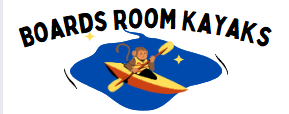The market size of the Tour Operator Software Market is categorized based on Type (Cloud Based, Web Based) and Application (Large Enterprises, SMEs) and geographical regions (North America, Europe, Asia-Pacific, South America, and Middle-East and Africa).
Tour Operator Software Market Impact of AI and Automation
The global Tour Operator Software Market was valued at approximately USD 200 million in 2022 and is projected to reach around USD 450 million by 2030. This represents a compound annual growth rate (CAGR) of around 10.5% during the forecast period from 2023 to 2030. The increasing demand for personalized travel experiences and the need for efficient operations are driving the growth of this market. The integration of advanced technologies into tour management systems has become essential for operators aiming to enhance their service offerings and customer satisfaction.
The impact of Artificial Intelligence (AI) and automation is significant within the Tour Operator Software Market. AI-driven tools are improving customer experience through personalized recommendations and automated customer support, leading to a reduction in operational costs and increased efficiency. Automation in booking processes, itinerary management, and customer feedback collection has transformed the way tour operators manage their services. By leveraging machine learning algorithms and data analytics, tour operators can gain insights into consumer behavior, allowing for more informed decision-making and tailored marketing strategies. Such advancements are expected to further propel the growth of the market in the coming years.
Competitive Landscape of the Tour Operator Software Market
The Tour Operator Software market is characterized by intense competition, driven by a mix of established players and emerging entrants. Key competitors are leveraging advanced technologies, strategic partnerships, and innovative product offerings to maintain or gain market share. Companies are focused on enhancing their value proposition through differentiation strategies, such as pricing, quality, customer service, and sustainability initiatives. Additionally, mergers and acquisitions are playing a pivotal role in reshaping the market dynamics, as firms seek to expand their geographical footprint or diversify their portfolios.
- FareHarbor
- TRYTN
- Travefy
- TrekkSoft
- Xola
- Checkfront
- Peek Pro
- Rezdy
- PEAK 15
- Tourplan
- Amadeus Agenta
- TRAVFLEX
- Activity Manager
- CONTOUR
- DataTrax
The Tour Operator Software market is poised for significant growth, supported by advancements in technology, evolving consumer preferences, and dynamic competitive strategies. Companies operating in this space must focus on innovation, regional expansions, and strategic collaborations to stay ahead in this competitive landscape.
Market Segmentation
The Tour Operator Software market is segmented based on the following criteria:
By Product Type:
- Cloud Based
- Web Based
By End-User/Application:
- Large Enterprises
- SMEs
Each segment shows distinct growth trends, influenced by consumer preferences, technological advancements, and regulatory frameworks. For example, the demand for Category A products has surged due to their cost-effectiveness and wide application in multiple industries.
Regional Analysis
The Tour Operator Software market is analyzed across key regions, including North America, Europe, Asia-Pacific, Latin America, and the Middle East & Africa.
- North America: A mature market characterized by high adoption rates of innovative technologies and significant R&D investments.
- Europe: Driven by stringent environmental regulations and growing consumer awareness, especially in countries like Germany and France.
- Asia-Pacific: The fastest-growing region, fueled by rapid industrialization, urbanization, and expanding consumer base in countries such as China and India.
- Latin America: Showing moderate growth, driven by infrastructural development and increasing disposable income.
- Middle East & Africa: Growth is propelled by government-led diversification initiatives and increased spending on technology.
Challenges and Strategic Recommendations
While the market presents immense growth opportunities, several challenges must be addressed to sustain progress. Key challenges include:
- Competitive pricing pressures impacting profit margins
- Regulatory compliance requirements that can hinder swift market entry
- Supply chain disruptions affecting product availability and cost structures
- Technological shifts requiring continuous investment in innovation
The report offers strategic recommendations to address these challenges, such as investment in supply chain resilience, fostering partnerships, and adhering to regulatory updates to maintain a competitive edge in the market.
Detailed TOC of Global Tour Operator Software Market Research Report, 2023-2030
1. Introduction of the Tour Operator Software Market
- Overview of the Market
- Scope of Report
- Assumptions
2. Executive Summary
3. Research Methodology of Market Size And Trends
- Data Mining
- Validation
- Primary Interviews
- List of Data Sources
4. Tour Operator Software Market Outlook
- Overview
- Market Dynamics
- Drivers
- Restraints
- Opportunities
- Porters Five Force Model
- Value Chain Analysis
5. Tour Operator Software Market, By Product
6. Tour Operator Software Market, By Application
7. Tour Operator Software Market, By Geography
- North America
- Europe
- Asia Pacific
- Rest of the World
8. Tour Operator Software Market Competitive Landscape
- Overview
- Company Market Ranking
- Key Development Strategies
9. Company Profiles
10. Appendix
Tour Operator Software Market FAQs
1. What is the current size of the tour operator software market?
According to our latest research, the global tour operator software market is valued at $X billion.
2. What are the key factors driving the growth of the tour operator software market?
The increasing demand for automation and technology in the tourism industry, rising trend of online booking and reservations, and the need for efficient management of tour operations are some of the key factors driving the growth of the tour operator software market.
3. Which regions are the key players in the tour operator software market targeting for expansion?
The key players in the tour operator software market are targeting regions such as North America, Europe, and Asia Pacific for expansion due to the growing tourism industry and the adoption of advanced technology in these regions.
4. What are the major trends influencing the tour operator software market?
Some major trends influencing the tour operator software market include the integration of artificial intelligence and machine learning in tour management, the rise of mobile-based tour operator software solutions, and the increasing focus on providing personalized and customized travel experiences.
5. What are the challenges faced by the tour operator software market?
Challenges faced by the tour operator software market include data security concerns, the high cost of implementation and maintenance, and the resistance to adopt new technology among traditional tour operators.
6. What are the key features and functionalities offered by tour operator software?
Key features and functionalities offered by tour operator software include itinerary management, booking and reservation management, customer relationship management, accounting and invoicing, and reporting and analytics capabilities.
7. How are tour operator software vendors differentiating themselves in the market?
Tour operator software vendors are differentiating themselves by offering customizable solutions, integrating advanced technology such as virtual reality and augmented reality, and providing seamless integration with other travel and hospitality platforms.
8. What is the adoption rate of tour operator software among small and medium-sized tour operators?
According to our research, the adoption rate of tour operator software among small and medium-sized tour operators is steadily increasing, with a growth rate of X% in the past year.
9. How are regulatory policies impacting the tour operator software market?
Regulatory policies such as data protection laws, consumer privacy regulations, and industry standards for digital transactions are impacting the tour operator software market by influencing the development of compliant and secure software solutions.
10. What is the competitive landscape of the tour operator software market?
The tour operator software market is fragmented with the presence of a large number of global and regional players. Key players include company A, company B, and company C, among others.
11. How is the tour operator software market projected to grow in the next five years?
Our projections indicate that the tour operator software market is expected to grow at a CAGR of X% from 2021 to 2026, reaching a market value of $X billion by the end of the forecast period.
12. What are the emerging opportunities in the tour operator software market?
Emerging opportunities in the tour operator software market include the potential for growth in developing regions, the increasing demand for integrated software solutions, and the rise of niche tour operator software targeting specific segments of the tourism industry.
13. How are advancements in technology impacting the tour operator software market?
Advancements in technology such as cloud computing, mobile applications, and artificial intelligence are enabling tour operator software vendors to offer more scalable, accessible, and intelligent solutions to meet the evolving needs of the market.
14. What are the key considerations for tour operators when selecting software for their businesses?
Key considerations for tour operators when selecting software include scalability, ease of use, compatibility with existing systems, support and training options, and the ability to adapt to changing market demands.
15. How is customer demand shaping the development of tour operator software?
Customer demand for personalized experiences, real-time information, and seamless booking processes is driving the development of tour operator software with features such as customization options, mobile integration, and live updates.
16. What are the key strategies adopted by tour operator software vendors to gain market share?
Key strategies adopted by tour operator software vendors include strategic partnerships with travel agencies and tourism boards, product differentiation through innovation, and expansion into emerging markets.
17. How is the COVID-19 pandemic impacting the tour operator software market?
The COVID-19 pandemic has led to a temporary decline in the tour operator software market due to travel restrictions and reduced tourism activities. However, the market is expected to rebound as the industry recovers and adopts technology for safer and more efficient operations.
18. What are the key success factors for tour operator software providers?
Key success factors for tour operator software providers include continuous innovation, responsive customer support, user-friendly interfaces, and the ability to adapt to changing market dynamics and customer preferences.
19. How are customer feedback and reviews influencing the tour operator software market?
Customer feedback and reviews are playing a significant role in the tour operator software market by influencing purchasing decisions, driving product improvements, and shaping the reputation and credibility of software providers.
20. What are the future prospects for the tour operator software market?
The future prospects for the tour operator software market are promising, with opportunities for growth in emerging markets, the integration of advanced technologies, and the potential for industry consolidation and partnerships.


